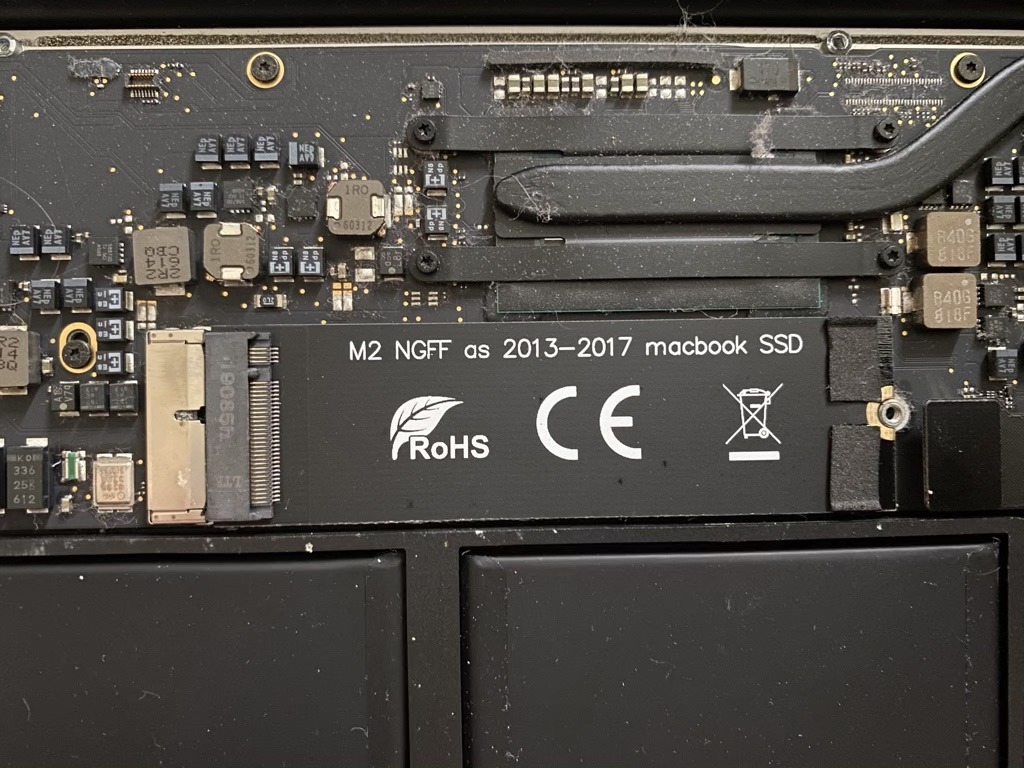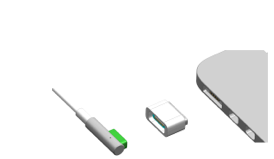
Upon examining it, it appears that its AC Adapter is at fault. I have with me a MacBook Air that one of my computer repair customers just dropped off at my computer repair shop, stating that it doesn't turn on. It's a gamble and I am glad it's paying off for these users, but me, as a computer engineer, I would never do such a thing. That's, in my opinion, is asking for trouble, and I am surprised that many users here say that they have been doing it for months and it's working just fine. I would accept voltage variations at no more than 2 extra voltages, say, 16 volts DC at 85Watts or whatever wattage, but never would I dare power any equipment that says that it needs 14.5 Volts with a 20.x power adapter. 20 volts is just a too much of a jump from the manufacturer's stamped device's voltage requirements. Yes, I agree, there is nothing wrong with using a higher wattage than the original power adapter for powering the MacBook Air, but it has to be at least very near the originally required voltage of 14.5 Volts DC. I am surprised that no one has noticed the attempt to power a device who's stated power requirements is "14.5 Volts DC at 3.05 Amperes" (The MacBook Air) with a 20 Volts (!!) DC 85 Watts power adapter. Get a cheap unit made from chicken wire and chewing gum though, and you are asking for a fire.Īs for charging speeds, the Air likely wont charge any faster at all, but the MBP may charge slower (or, like an iPad running off an iPhone charger, not at all when in use and merely provide enough power to keep the device going).

Changes are that it can supply more, say (depends on the quality of the unit) +10%.Ī high quality unit (such as an official Apple unit, not an eBay Hong Kong special) will have various safety measures to prevent all sorts of things, from overheating, over current, etc etc, and the worse you can except is the unit to fail gracefully with protected systems. There are 2 points to note here:Īlthough it isn't stated in obvious terms, the 45 W (or whatever) rating shown on the power supply isn't necessarily accurate, it is in fact the guaranteed minimum continuos rate that it can supply. If it's in sleep and just charging it will be fine, however the chance is there that if you thrash it it will start requesting more power than the MBA charger can safely provide. Assuming you use a MBP on a MBA charger, then light use will likely never draw enough power to max out the charger. The same rules apply, it will draw the power that it needs, and no more.

OFF BRAND REPLACEMENT CHARGER FOR MACBOOK AIR 2013 FULL
If you use a MacBook air that is supplied with a 45 W adapter with an 85 W adapter instead, it will still only draw what it needs, which is likely a whole lot less than the rated capacity of the charger anyway, which is rated to be able to not only keep the computer going at full bore if required, and also charge the battery at the same time.Ģ) Using a lower rated power supply than the original unit.Ĭhances are this is fine most of the time but there are more risks.

The power supply will never just automatically run at 100 % of it's capability, it will only supply what is requested. 1) Using a higher rated power supply than the original unit.


 0 kommentar(er)
0 kommentar(er)
